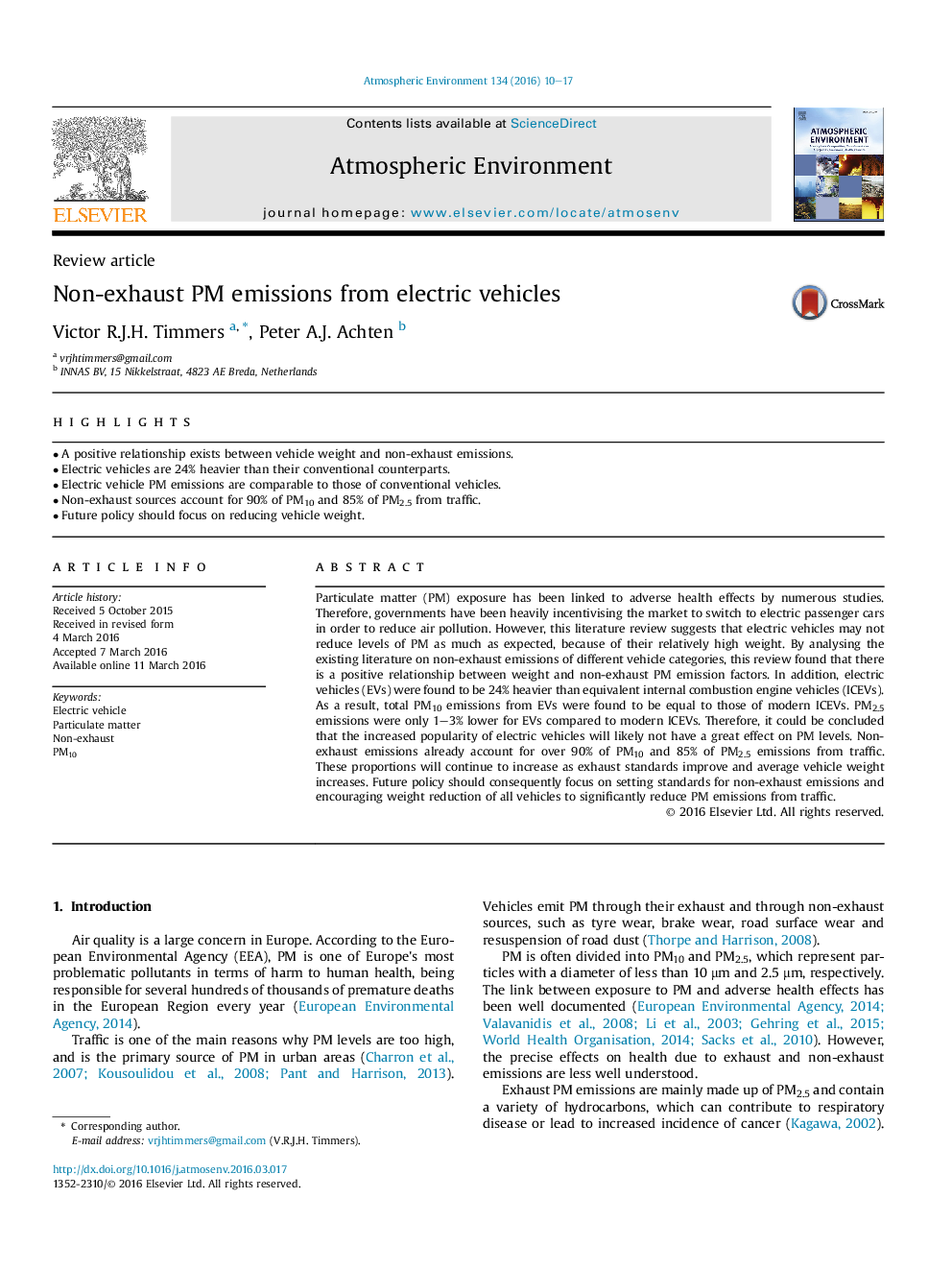| Article ID | Journal | Published Year | Pages | File Type |
|---|---|---|---|---|
| 6336569 | Atmospheric Environment | 2016 | 8 Pages |
â¢A positive relationship exists between vehicle weight and non-exhaust emissions.â¢Electric vehicles are 24% heavier than their conventional counterparts.â¢Electric vehicle PM emissions are comparable to those of conventional vehicles.â¢Non-exhaust sources account for 90% of PM10 and 85% of PM2.5 from traffic.â¢Future policy should focus on reducing vehicle weight.
Particulate matter (PM) exposure has been linked to adverse health effects by numerous studies. Therefore, governments have been heavily incentivising the market to switch to electric passenger cars in order to reduce air pollution. However, this literature review suggests that electric vehicles may not reduce levels of PM as much as expected, because of their relatively high weight. By analysing the existing literature on non-exhaust emissions of different vehicle categories, this review found that there is a positive relationship between weight and non-exhaust PM emission factors. In addition, electric vehicles (EVs) were found to be 24% heavier than equivalent internal combustion engine vehicles (ICEVs). As a result, total PM10 emissions from EVs were found to be equal to those of modern ICEVs. PM2.5 emissions were only 1-3% lower for EVs compared to modern ICEVs. Therefore, it could be concluded that the increased popularity of electric vehicles will likely not have a great effect on PM levels. Non-exhaust emissions already account for over 90% of PM10 and 85% of PM2.5 emissions from traffic. These proportions will continue to increase as exhaust standards improve and average vehicle weight increases. Future policy should consequently focus on setting standards for non-exhaust emissions and encouraging weight reduction of all vehicles to significantly reduce PM emissions from traffic.
